Equatorial Guinea Flag Meaning
Three horizontal stripes of green, white, and red with a blue triangle at the hoist and the national coat of arms in the center, representing the country's forests, peace, independence struggle, and maritime heritage.
- Continent
- Africa
- Adopted
- 1968
- Ratio
- 2:3
- Colors
- green, white, red, blue
- Designer
- Unknown
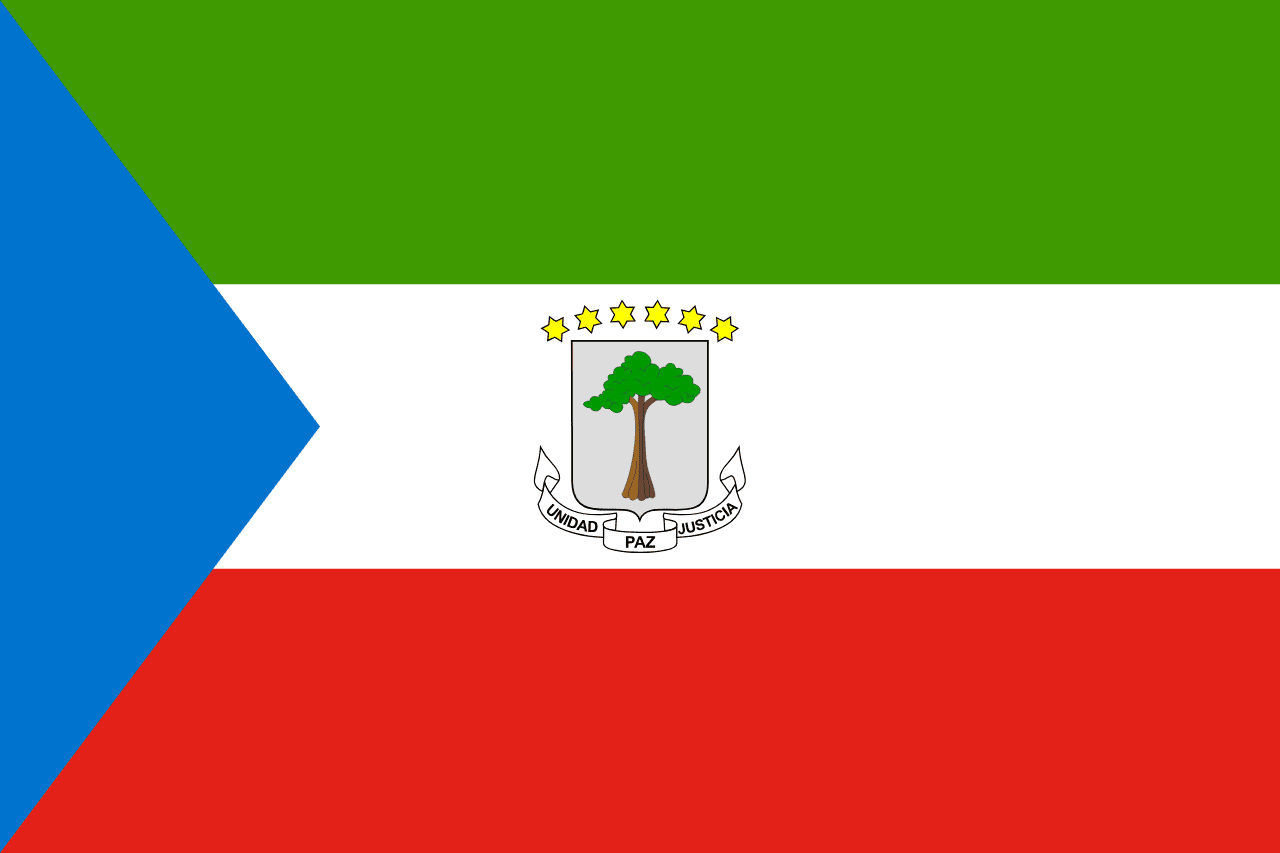
Symbolism
Green Stripe: Represents the dense tropical forests and rich vegetation that cover most of Equatorial Guinea, symbolizing the country's natural wealth, agricultural potential, and the lush rainforests that are home to diverse wildlife including gorillas and elephants.
White Stripe: Represents peace and unity among the diverse ethnic groups of Equatorial Guinea, symbolizing the desire for harmony between the mainland region (Río Muni) and the island regions (Bioko and Annobón).
Red Stripe: Represents the blood shed during the struggle for independence from Spanish colonial rule, symbolizing the sacrifice made by those who fought for freedom and the determination of the Equatoguinean people to achieve sovereignty.
Blue Triangle: Represents the Atlantic Ocean that surrounds the islands and borders the mainland coast, symbolizing the maritime heritage of the nation and the connection between the continental and insular parts of the country.
National Coat of Arms: Features a silk cotton tree (ceiba) representing the natural environment, six yellow six-pointed stars representing the mainland and five islands, and the national motto 'Unidad, Trabajo, Progreso' (Unity, Work, Progress).
History
- Pre-1472: Various Bantu peoples inhabited the mainland region, while the islands were settled by different groups, developing distinct cultures adapted to rainforest and island environments respectively.
- 1472-1778: Portuguese navigator Fernando Pó discovered the islands, naming the largest Formosa (later Fernando Pó, now Bioko), with limited Portuguese settlement and the islands serving as waypoints for the slave trade.
- 1778-1968: Spain acquired the territory through the Treaty of El Pardo, establishing Spanish Guinea with fluctuating control over both mainland and island regions, introducing cocoa plantations and colonial administration.
- 1959-1968: The independence movement gained momentum with the formation of political parties and growing demands for self-government, leading to negotiations with Spain for transition to independence.
- October 12, 1968: Equatorial Guinea gained independence from Spain with Francisco Macías Nguema as the first president, adopting the current flag design to represent the new sovereign republic.
- 1968-1979: Macías Nguema's increasingly authoritarian and erratic rule led to economic collapse, mass executions, and the exodus of much of the educated population, while the flag remained as a symbol of the troubled state.
- August 3, 1979: Teodoro Obiang Nguema Mbasogo overthrew his uncle Macías in a military coup, beginning what would become one of the world's longest-ruling presidencies while maintaining the national flag.
- 1990s-Present: The discovery of significant oil reserves transformed Equatorial Guinea's economy, making it one of Africa's wealthiest countries per capita, though wealth distribution remains highly unequal under continued authoritarian rule.
Trivia
- Equatorial Guinea is the only Spanish-speaking country in Africa, making it unique among African nations and a member of both the African Union and the Hispanophone community.
- The flag represents one of the world's wealthiest countries per capita due to oil revenues, yet most of the population remains in poverty due to extreme inequality.
- Teodoro Obiang Nguema Mbasogo has been president since 1979, making him one of the world's longest-serving heads of state currently in power.
- The country consists of a mainland region (Río Muni) and several islands, with Bioko Island hosting the capital Malabo despite being separated from the mainland by Cameroon.
- Equatorial Guinea has one of the highest GDP per capita in Africa, but also some of the worst human development indicators, reflecting severe wealth concentration.
- The flag flies over a country that is home to significant populations of western lowland gorillas and forest elephants in its protected rainforest areas.
- Spanish, French, and Portuguese are all official languages, though Fang, Bubi, and other local languages are widely spoken by different ethnic groups.
- The discovery of oil in the 1990s led to an economic boom that earned Equatorial Guinea the nickname 'Kuwait of Africa' due to its oil wealth.
- Malabo, the capital, is located on Bioko Island and is one of the few African capitals not located on the mainland of its country.
- The flag represents a country with significant environmental challenges, including deforestation and the impact of oil extraction on pristine rainforest ecosystems.
- Equatorial Guinea has been criticized for poor governance and human rights violations despite its oil wealth, leading to international isolation and sanctions.
- The country's football team has gained international attention, particularly through players like Samuel Eto'o, who was born in Cameroon but represented Equatorial Guinea's neighbor.
- Oyala is being built as a new planned capital city to replace Malabo, representing efforts to move the seat of government to the mainland region.
- The flag flies over a country where traditional beliefs coexist with Christianity, with many people practicing both indigenous religions and Catholicism brought by Spanish missionaries.
- Equatorial Guinea's rainforests are part of the Congo Basin, representing some of the most biodiverse ecosystems in the world with endemic species found nowhere else.
Related Countries
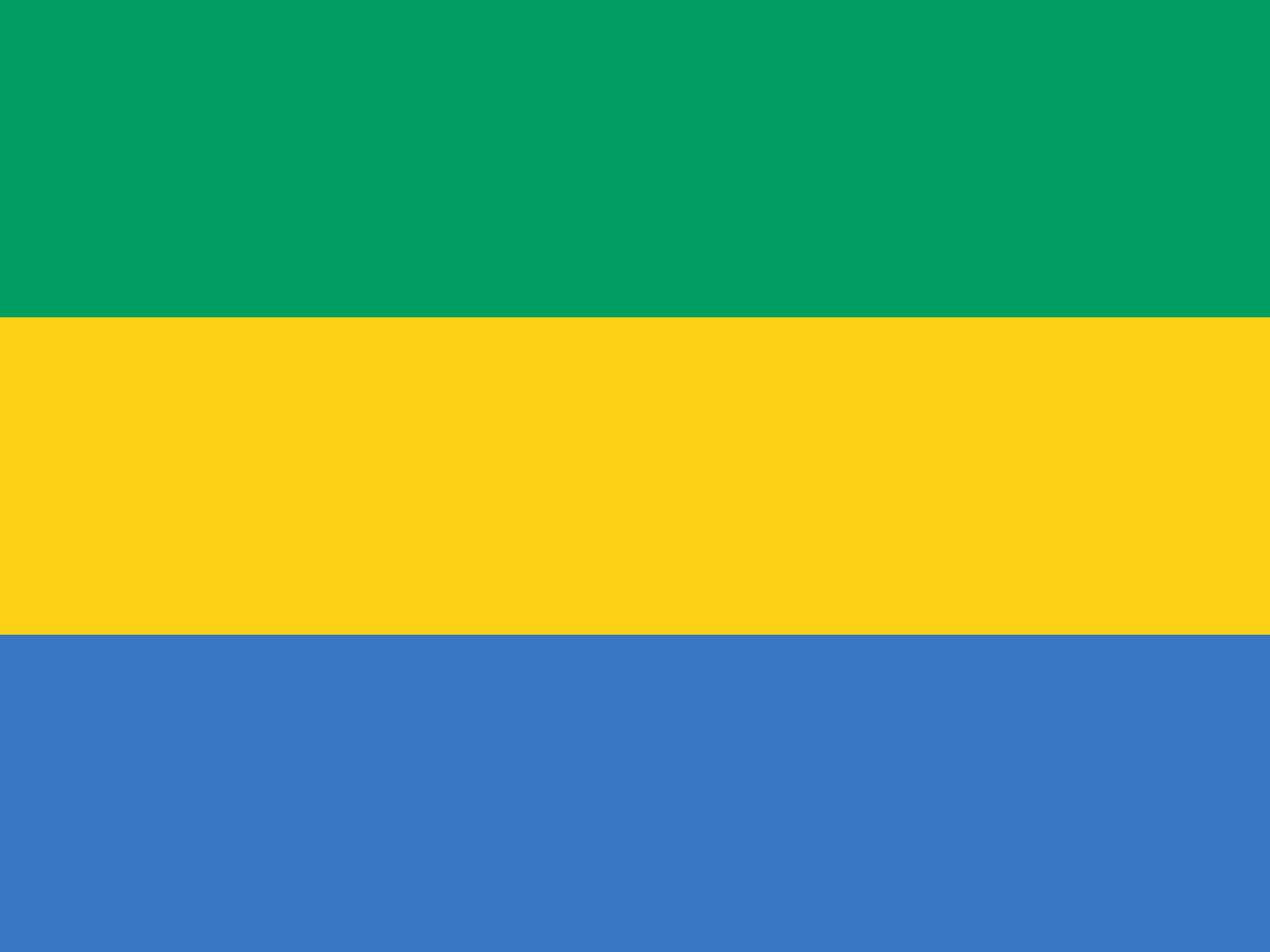
Gabon
Africa
Three horizontal stripes of green, yellow, and blue representing Gabon's equatorial forests, the equator itself, and the Atlantic Ocean, adopted upon independence from France.
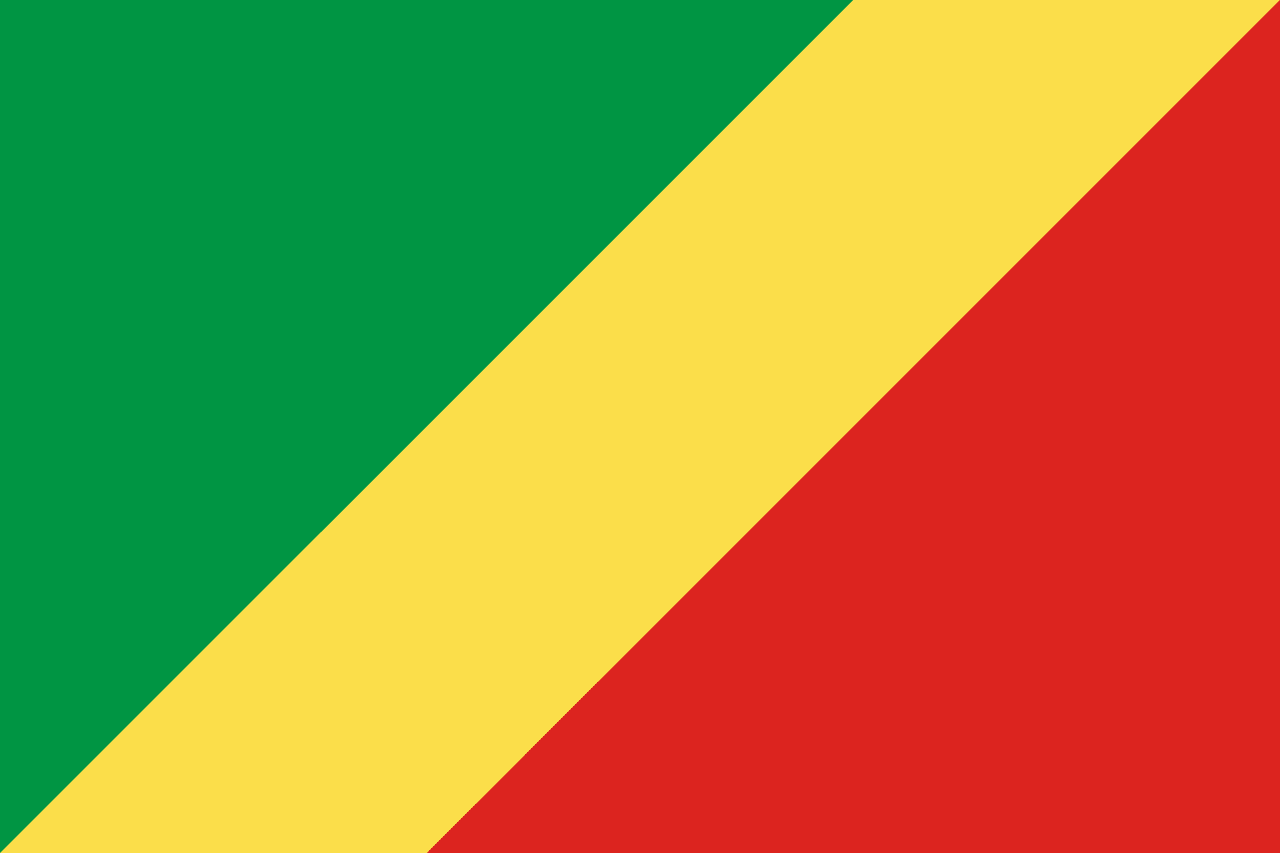
Republic of the Congo
Africa
A diagonal tricolor with green in the upper hoist, red in the lower fly, and yellow diagonal stripe separating them, representing the forests, the struggle for independence, and the friendship and nobility of the Congolese people.
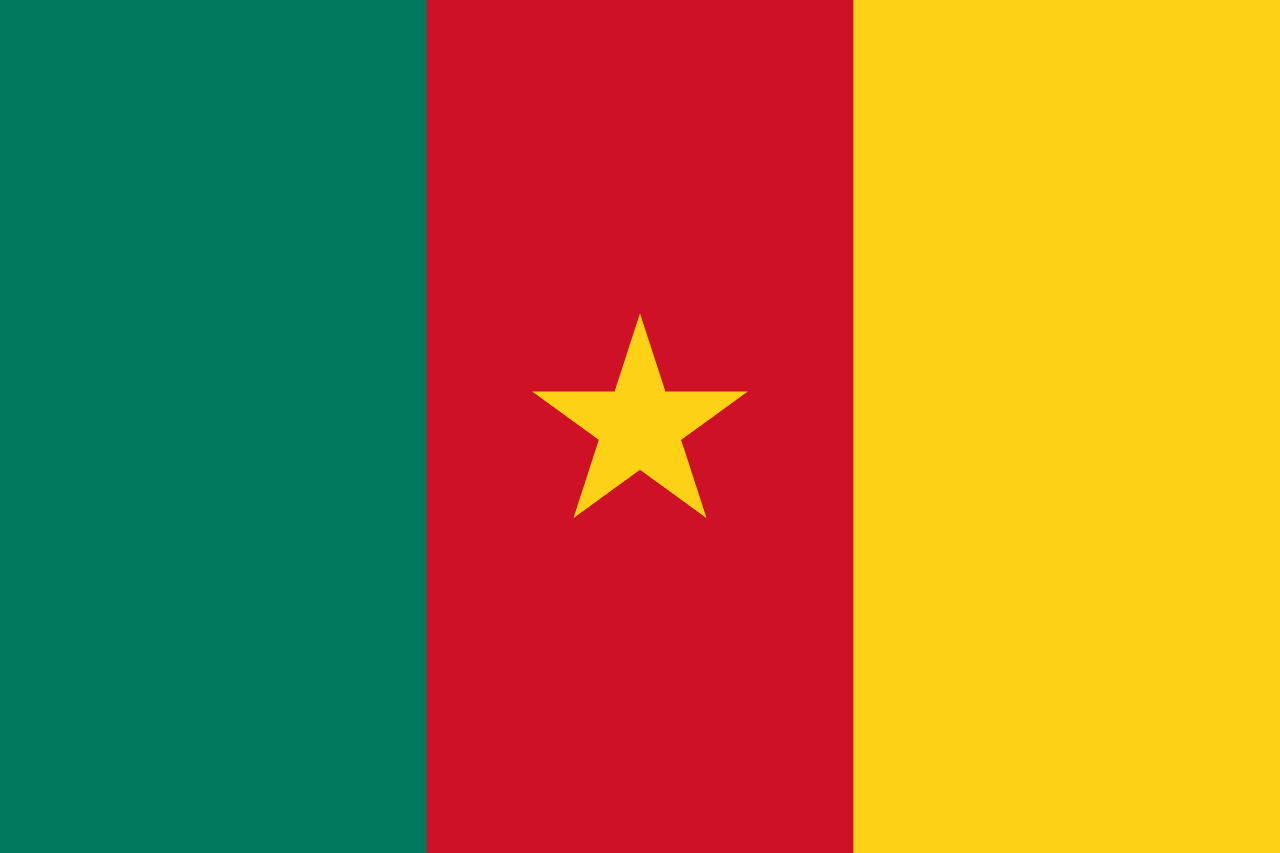
Cameroon
Africa
Three vertical stripes of green, red, and yellow with a yellow five-pointed star in the center of the red stripe, representing the forests, unity, the sun and savanna, and the unity of the diverse peoples of Cameroon.
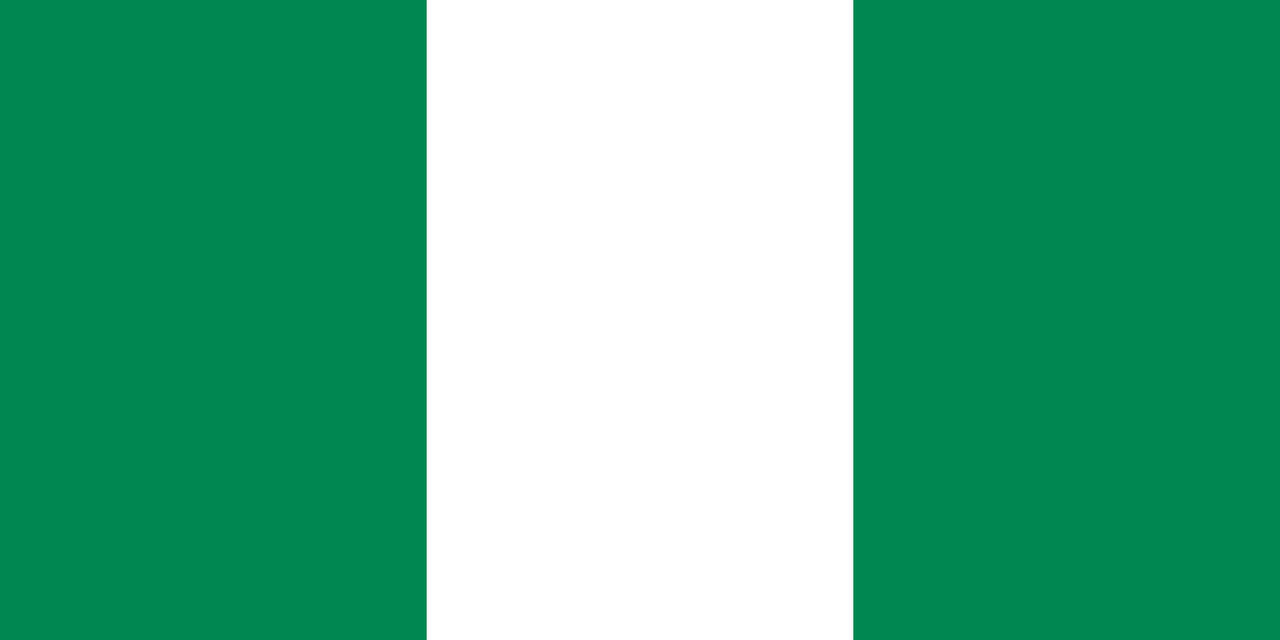
Nigeria
Africa
A vertical tricolor of green, white, and green. The flag was adopted at independence in 1960 and represents agriculture, unity, and peace.
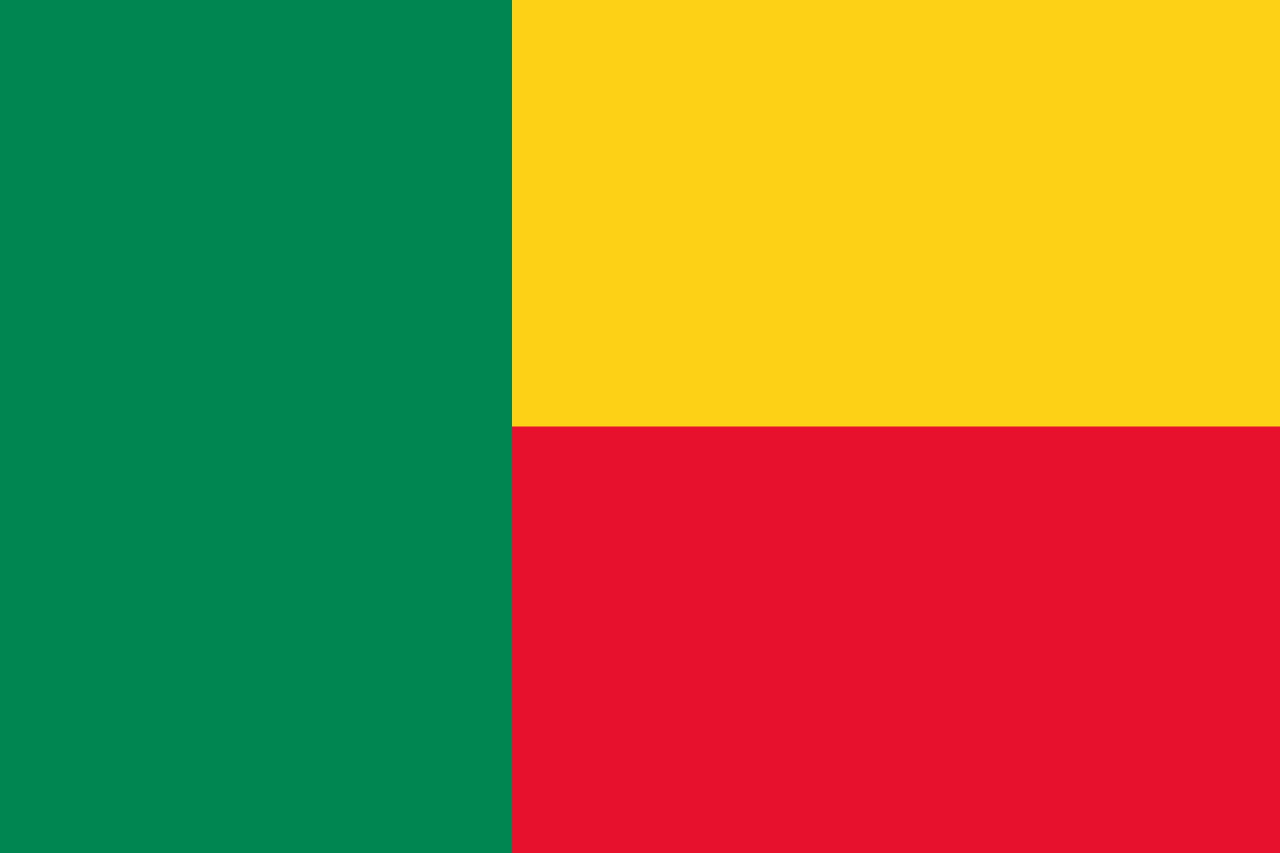
Benin
Africa
A vertical green stripe on the hoist side with horizontal yellow and red stripes on the fly side, representing the forests and hope of the nation, the savannah and mineral wealth, and the courage and blood of the ancestors, using the Pan-African colors that symbolize African unity and liberation.
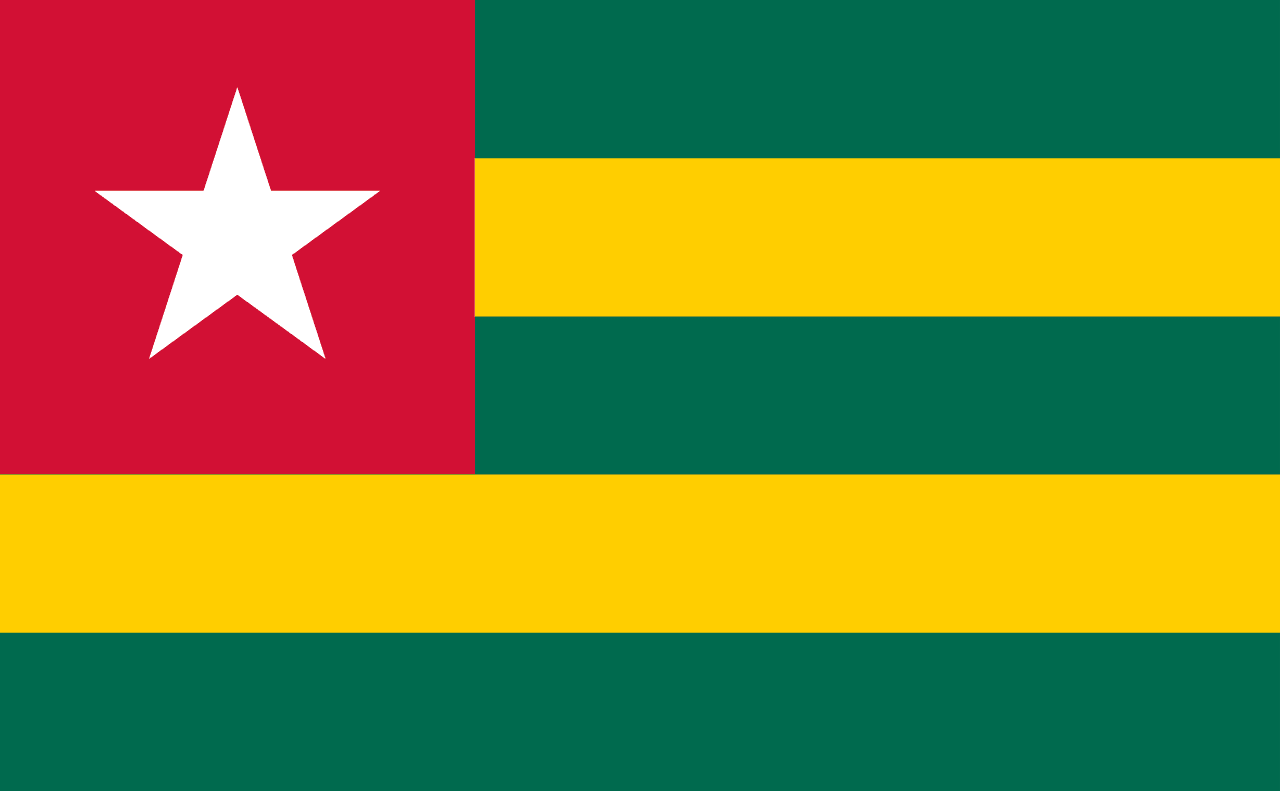
Togo
Africa
Five horizontal stripes alternating green and yellow with a blue canton containing a white five-pointed star, representing the country's forests and agriculture, mineral wealth, the blood shed for independence, hope and purity, and the unity of the Togolese people under one star.